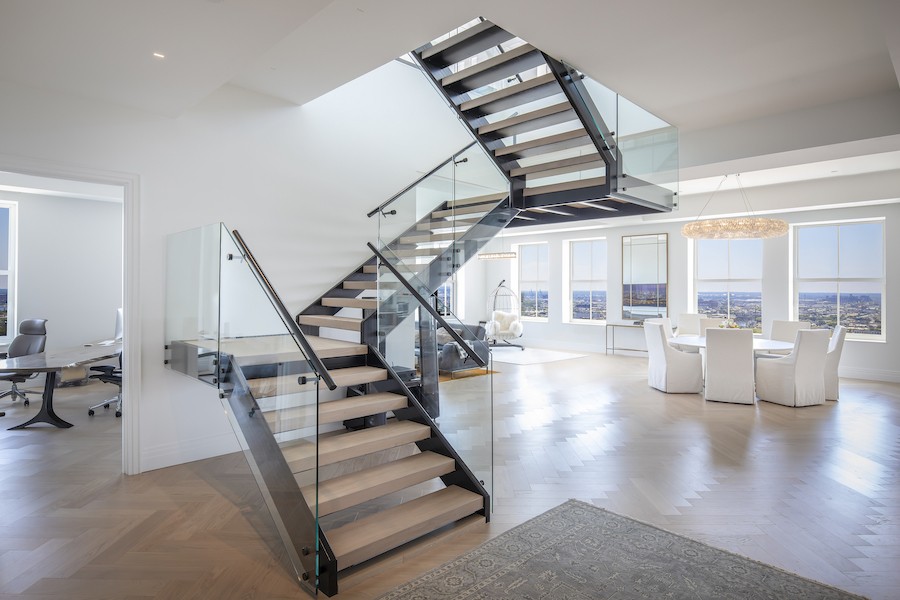The Top 5 Real Estate Stories of 2019
What events rocked the world of Philadephia real estate this year? Here are our picks.

While the roughly 50 percent reduction in the value of the 10-year property tax abatement will make projects harder to finance, one area developer says, the conditions remain favorable for continued new construction in the city. | Photo: Madison Stringer
As the year winds down to a close, as is our wont, we now take a look back at the past 12 months to see what developments had the greatest impact on the world of real estate and development. One of these five stands head and shoulders above the rest.
5. The city takes a few more stabs at the affordable-housing issue.
Even though Philadelphia remains the most affordable major city in the Northeast, housing affordability remains an issue thanks largely to the city’s stubbornly high poverty rate. But as house values continue to climb in a number of city neighborhoods, some advocates have voiced concern that even average working families were finding decent housing harder to find.
Several bills introduced in City Council this year aimed at shoring up the supply of affordable housing and enabling those who now have it to stay in it longer. A bill passed by City Council in November set up a legal defense fund to provide free legal counsel to low- and moderate-income tenants facing eviction. Other bills proposed but not enacted this year sought to give nonprofit housing groups first crack at affordable housing units whose subsidies are about to expire, extend the density bonuses for paying into the city’s Housing Trust Fund to commercial property developers and offer tax credits to landlords who rented their units to low-income tenants.

A $20,000-per-month penthouse apartment at The Atlantic. | Photo courtesy Keller Williams Black Label/Rent Philly
4. Apartments continue to get snapped up.
Recall that apartment glut we predicted two years ago? Not only did it fail to materialize last year, the rental market, especially in Center City, continued to do well this year.
According to figures from JLL, in 2019 to date, people moving into apartments in Center City have consistently outpaced the number of new units that have come on line. That has helped buoy rents at new luxury developments like The Atlantic, three of whose four penthouses were rented for rents as high as $20,000 per month even before the building opened.
Two trends help explain this performance. One is that even as they age into the homebuying years, Millennials are opting to continue renting in greater numbers than previous generations. The other is that the ranks of affluent renters have swollen of late. The number of renter households earning $150,000 or more a year in Philadelphia grew more than fourfold over the last decade, providing a steady stream of occupants for all the new high-end apartments.

The living room of the $125 million penthouse at The Laurel. | Rendering courtesy Southern Land Company
3. Two sale-price records fall in one fell swoop.
The highest residence in the city went on the market this fall for the highest price ever sought for a residence anywhere in the city.
Developer Southern Land Company put the 8,666-square-foot 48th-floor penthouse atop The Laurel on Rittenhouse Square up for sale at the beginning of October with an asking price of $25 million. Actually, this unit breaks three records. At about 575 feet above the street, the full-floor condo will be the city’s highest residence. Its $25 million sale price eclipses that of the previous record-holder, Tom Scannapieco’s $17.85-million bi-level penthouse at 500 Walnut. And since this unit is smaller than the one at 500 Walnut by 234 square feet, its price per square foot of $2,885 shattered the previous price-per-square-foot record.
The stratospheric sale price reflects continued strength at the upper end of the residential real estate market in Philadelphia. In contrast, high-end houses in the suburbs have not sold as quickly as those in the city have this year. This property, however, has yet to find its buyer. Three months isn’t all that long when you’re asking $25 million.

The interior of the Fashion District Philadelphia mall shortly before Opening Day. | Photo: Sandy Smith
2. The Gallery is dead. Long live the Gallery Fashion District!
Three years after it closed for a total makeover, The Gallery at Market East reopened to shoppers Sept. 19th. Only this revamped downtown mall also had a new name: Fashion District Philadelphia. PREIT and Macerich, which had bought the mall from the Rouse Company, poured some $400 million into reimagining it and retooling it to survive in an era when shopping malls are on the ropes.
Like many other malls, Fashion District Philadelphia opted to introduce non-shopping destinations as a way of attracting new traffic. These include two co-working facilities, a concert venue and restaurant, a multi-screen movie theater and a bowling alley and amusement arcade. The new uses also addressed the problem of the old Gallery’s moribund top level.
In addition to these new tenants, the mall is adding a number of experiential stores that will occupy space for shorter time periods. Candytopia, a sweet-treat-filled playroom, opened with the mall; another, Wonderspaces, is an interactive art exhibit that will open in January. The mall also now serves as a small-business booster with four “Uniquely Philly” retailers on the concourse level.
One of those four, South Fellini, offers for sale a T-shirt that may accurately capture how many longtime Philadelphians still regard the lighter, brighter mall: It bears the Gallery logo. But the made-over mall appears to be succeeding at drawing a diverse array of shoppers from across the city back to it.
1. The property tax abatement gets a haircut.
The city’s developers and building trades fought like mad to preserve the 10-year property tax abatement intact, but in the end, and at the end of the year, the pressure for change was simply too great to resist. Two weeks ago (Thursday, Dec. 12th), Philadelphia City Council voted unanimously to cut the value of the tax abatement for new residential construction in the city by roughly half, starting at the end of next year.
The lame-duck Council moved quickly to push this legislation through in order to cut off at the pass two incoming members who had both pledged to abolish it completely. The council gave preliminary approval to a bill that would have taken effect at the end of June 2020 on Dec. 3rd but pushed back the effective date in response to a threat from Mayor Jim Kenney to pocket-veto the bill.
The legislation leaves untouched both the tax abatement for new commercial construction and the abatement for rehabilitated properties of any kind.
Even though a 2017 Building Industry Association study credited the abatement with reversing the construction trendlines in the city and its suburbs and a report commissioned by the Office of the Finance Director in 2018 showed that the city gained more revenue in the long run by leaving the abatement unchanged, city residents whose property tax bills kept climbing while new home buyers got a huge break began agitating for change more than a year ago. Critics called the abatement a giveaway to the rich and a driving force for gentrification.
Now that change is definitely coming, few in the development and construction industry have repeated the predictions of a total meltdown they made before the bill was pushed through. One out-of-town developer told Philly Mag that even though the change in the abatement would make it harder to finance new projects, the market conditions here were still so much more favorable than in the other cities where they did business that it would not significantly change their development plans.


